To hide cuts on the fabric, you can make several lines of stitches with a lapped seam when embroidering. The advantage of the linen seam is its strength, so it is used in those products that are often machine or hand washed.
A lapped (linen) seam can be made on any fabric, either on a sewing machine or by hand.
Equipment for making a seam
A sewing machine can help you make this stitch. When choosing equipment, it is important to consider some parameters. For example, it is better to choose machines from well-known brands, such as Singer.
If such a machine breaks down, you can easily replace the parts. However, if a machine from a lesser-known company breaks down, there is a chance of encountering problems when replacing the components of the device.
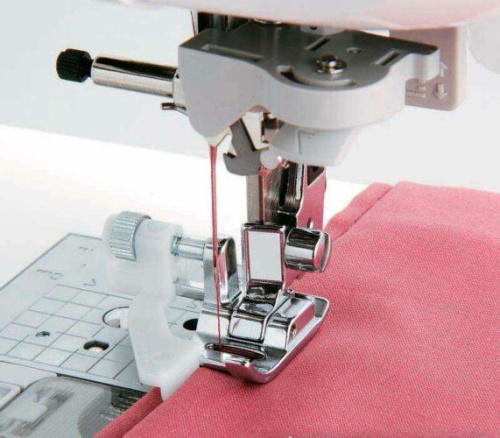
The type of machine is also very important. Electromechanical machines are considered the most popular, as they can be used for home and industrial work. Despite the fact that they can break down under heavy loads, they can be used in a small home studio.
The shuttle design is also one of the determining parameters in choosing a machine for work. Low quality shuttles can quickly break and fly out of the mount. This will significantly worsen the quality of the finished product.
So, when choosing a vertical swing shuttle, you should remember that it is not designed for long-term operation. Also, it should not be plastic, since plastic shuttles can crack with frequent use.
The most durable is the vertical shuttle. It is chosen if the machine is needed for frequent and long-term work.

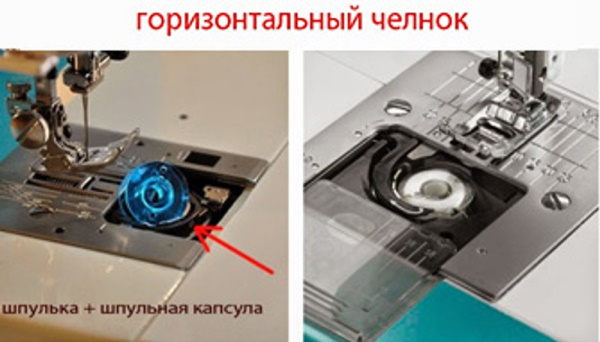
No less important are the following machine functions:
- the number of stitches it makes;
- stitch regulation;
- methods of making loops;
- double needle;
- overlock.
Features of the seam, where it is used
A lapped seam that can be used when sewing bedding, sportswear, workwear, denim, skirts and trousers that are often washed. The seam is characterized by the fact that on one side of the fabric you can see 2 lines and on the other – 1.
Also, when doing it, it is necessary to accurately determine the size of the allowances. The size of them will determine the width of the finished seam.
The lapped seam is intended for garments that are often exposed to friction, roughness and mechanical impact of the external environment. Even when done by hand, it is considered one of the strongest and most durable seams. It can be done on coarse and dense fabrics.
For example, it can be used to sew soldiers' clothing. It is very important that dust does not accumulate in the seams of duvet covers and pillowcases. It is the linen (lapped) seam that helps to avoid dust in the joints of bed linen parts.
The name of a seam may vary depending on what product it is used for.
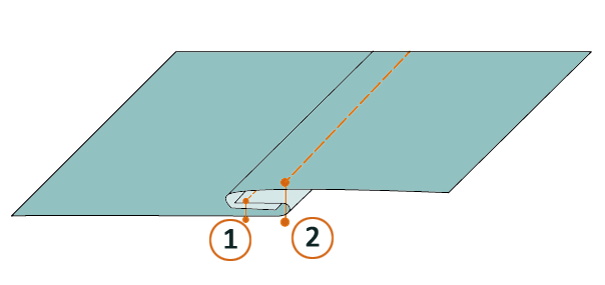
| Name | What is it used for? |
| Double | Making shirts, duvet covers and pillowcases. |
| Lap-sewing | Sewing clothes for sports, uniforms for soldiers. |
Methods of making lapped seams
When sewing, you should make 2 lines, 1 of which is visible from the front side. Often this line is a finishing line, and it is designed a little differently, choosing thicker threads and changing the stitch length.
A lapped seam, which can be done either on a sewing machine or by hand, can be sewn as follows:
- Place the 2 pieces of the garment inside out and mark the connecting stitch. You can fasten the 2 pieces together using special tailor's pins.
- Using a sewing machine, stitch the fabric, trim 1 allowance to 4–5 mm.
- Wrap the uncut seam allowance around the cut seam allowance and baste them.
- Fold and iron the basted allowances so that they hide the edge of the fabric. Baste the allowance directly to the product.
- Lay a line of seams, leaving no more than 2 mm from the fold.
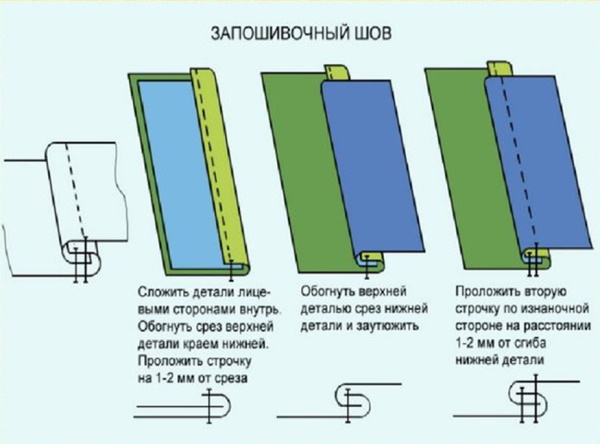
Most often, a lapped seam is made on a sewing machine, so a significant number of methods for doing it are associated with this particular sewing tool.
For example, to perform it, you can use 2 technologies for its implementation:
- Using a universal foot;
- Using a hemming foot.
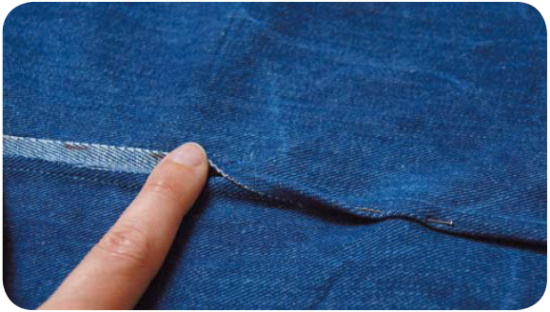

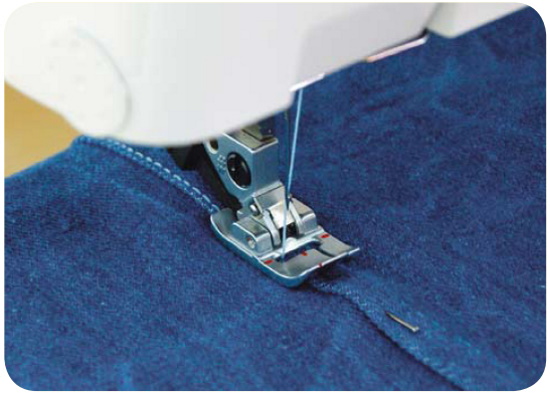
If you are using a universal foot for your work, you should:
- Place the pieces inside out and mark seam allowances of at least 1 cm. Stitch along the seam using a needle and thread that matches the color of the fabric.
- Trim 1 of the seam allowances in half.
- After ironing the fabric, fold the uncut seam allowance in half towards the wrong side and secure with tailor's pins so that the small seam allowance is hidden inside.
- Take a thick needle, which needs to be stitched through 3 layers of material. Set the machine to stitch straight lines and select long stitches. The needle should be offset so that the line is almost at the edge (at a distance of several millimeters) of the allowance.
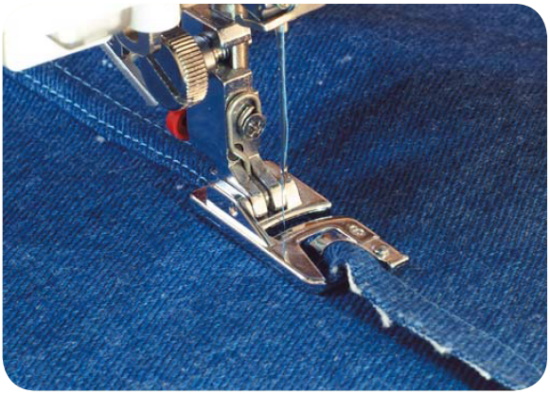
The hemming foot, also called the hem foot, helps in sewing a linen seam. This can be done with the help of a small groove located on the bottom of the foot. With its help, the foot passes over the thickening of the linen seam.
A small projection bends the edge, which should be tucked in. To sew a lapped seam, select a 4 or 6 mm foot. A linen seam made with a special foot is sewn in the same way as a seam with a regular foot.
To obtain the 2nd line, move the right side of the foot along the seam.
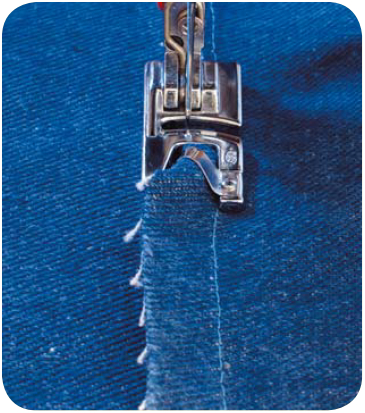
The lapped seam, which can be done on items made from thick and stiff fabric, is done as follows:
- Place 2 pieces of clothing inside out and baste them. Leave a little more fabric on the bottom seam allowance than on the top.
- Fold the ends of the fabric at a distance of 1 mm from the fold. It is necessary to pay attention to the fact that all bends are even, and there are no folds or creases left on the fabric itself.
- Remove the basting. Unfold the pieces, secure the fabric edge with a seam and baste.
- The stitching should be located 2 mm from the folded part of the fabric.
- The basting is removed, the finished product is smoothed out and straightened.
Folded seam in denim products
When sewing clothes from denim, a lapped seam is also used. The advantage of this seam in denim products is considered to be the high strength of the fastening.
Also, the lines of the lapped seam do not require additional overcasting of the edges of the material. The difference in performing a seam on denim fabric is that 2 lines should be laid on the front side of the material with threads of any bright color. These stitches perform 2 functions: connecting and decorative.
Products made at a factory or plant are distinguished by the presence of 2 lines, stitched with special 3 needles. It is not possible to make such lines without factory equipment. At home, you can only make similar stitches.
From the front side, the stitches will look like factory stitches, but from the back side, the stitches will be regular, not factory stitches. The allowances must be at least 15 mm. Then the lapped seam is performed directly in any way until the folded edge is stitched.
When starting to stitch the edge, it is necessary to stitch a line with threads of the opposite color (for example, brown). The indent from the fold should be 0.1 cm. Then, the 2nd line is laid with threads of the same color at a distance of no more than 7 mm from the first.
It is very important to ensure that the lines run parallel to each other. In this matter, the width of the sewing machine foot can serve as a guide. When finishing the work, the product should be ironed.
On thin denim
To avoid tearing thin denim, you should sew a linen seam on the back side; there is no need to sew stitches on the front side. A special foot will allow you to cause even less damage to the delicate fabric of the product.
To avoid difficulties when using such a foot, you should refer to the instructions for your sewing machine.
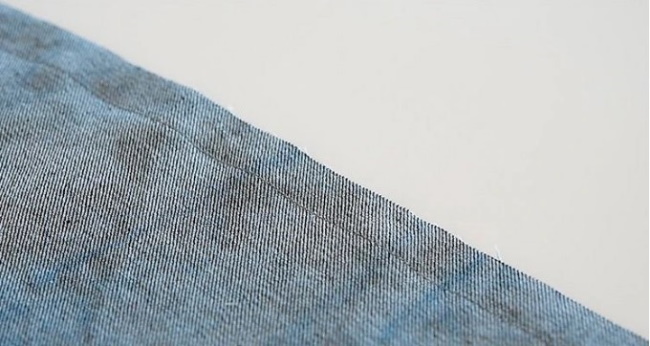
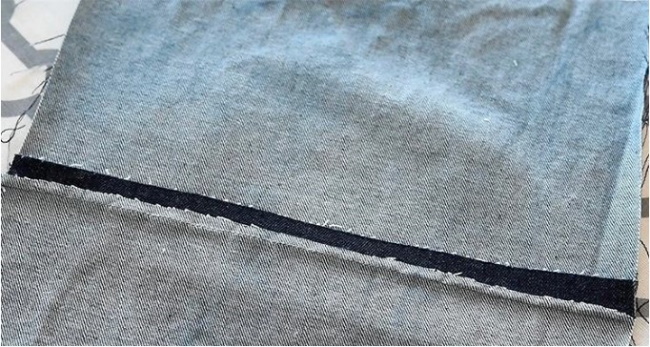

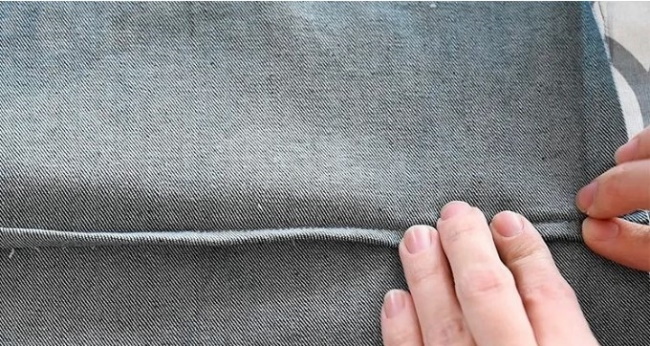
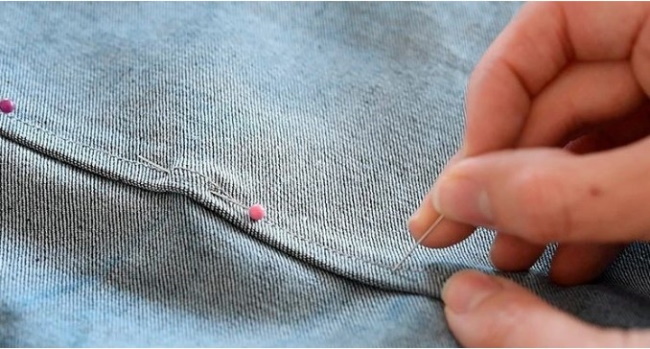
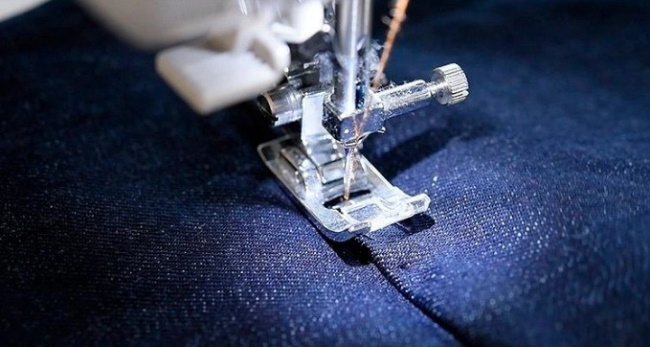
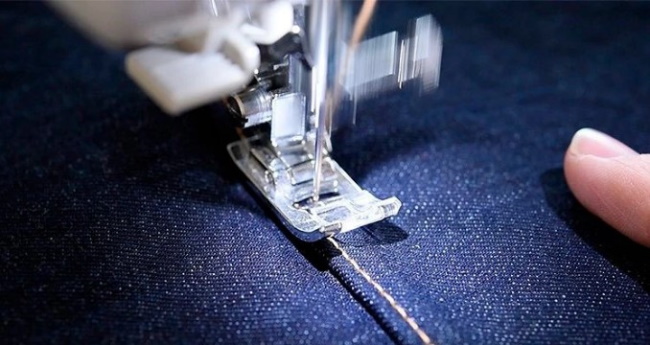
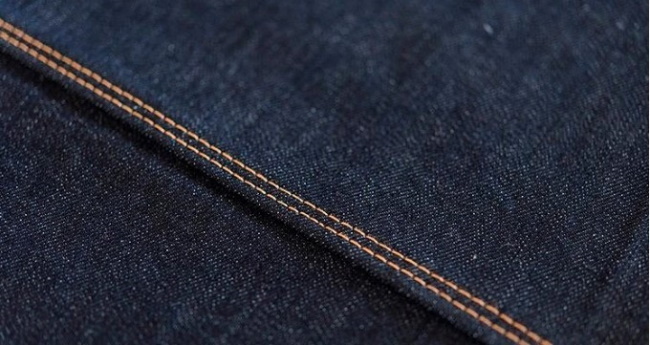
On thin fabric, the seam can be done in 2 ways:
- Sew the seams, leaving equal allowances – about 15 mm.
- Sew the seams, leaving an allowance of 15 mm for 1 piece and 5 mm for 2 pieces.
The parts are stitched with the wrong sides facing out, marking a line for the connecting line. The fabrics are joined together, while one of the allowances must be cut off. The edges must be fixed with a basting stitch. Fold and iron the edges.
The raw cut should be on the inside. The resulting fold of fabric should also be sewn to the main product. At a distance of up to 2 mm from the fold, it is necessary to perform a line of stitches on the machine.
For sewing bed linen
When sewing bed linen, a lapped seam is also used. The technique for doing it does not differ much. Thus, 2 elements of the product are folded and basted together.
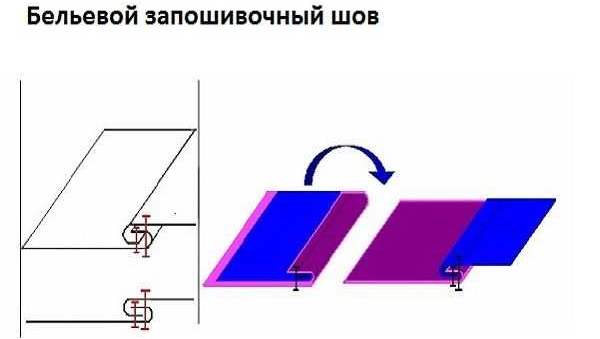
The ends of the pieces are joined, making sure that no folds remain on the fabric during sewing. After machine stitching, the basting can be removed. When the work is finished, the product should be ironed.
Tips and tricks for making a seam
To avoid difficulties when embroidering, it is necessary to carefully inspect the fabrics before starting to sew. It is also recommended to wash and iron them before working with them. This will prevent the finished product from shrinking after 1 wash.
To secure the fabric edges, you can connect them using pins with heads. They should be directed towards the cuts. In the process of work it is necessary to take the pins out of the fabric one by one. If you take out all the pins at once, the pieces of fabric may come apart, and the lines may turn out crooked.
Rusty pins should not be used as they may cause stains on the fabric.
When sewing pillowcases and duvet covers, it is necessary to choose dense and natural fabrics, such as cotton and linen. The fabric for the future product must be felt before choosing. This will help to avoid discomfort when using this item.
It is also very important to choose the right threads, as this will help to avoid deformation of the material. The thread and material should match in color. You should also avoid buying cheap, low-quality threads. So, polyester threads are suitable for bed linen. The material and thread should match.
Before buying, you should study the marking. For example, the LL symbol indicates that the thread contains flax and lavsan.
Underwear seams are considered to be among the most reliable and strong seams. Most often, lapped seams are made to fasten parts together. High seam strength is especially important in sportswear and bed linen.
Video about sewing
Overlap (underwear) seam:
